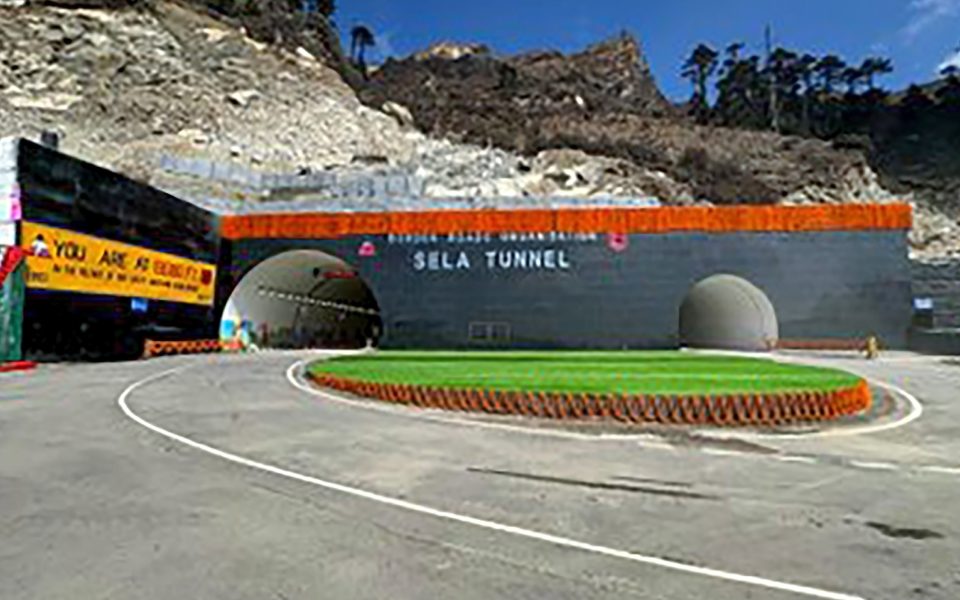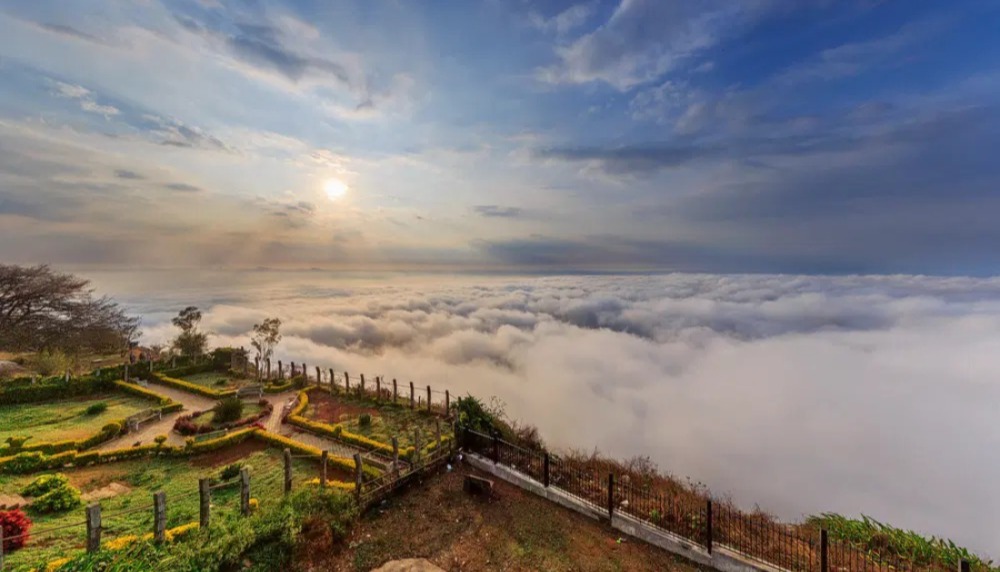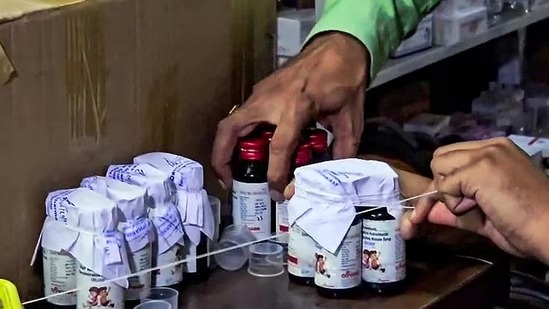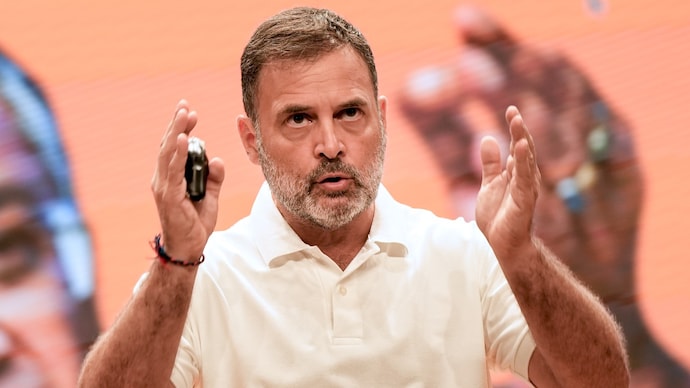Guwahati, Mar 9: The world's longest twin-lane Sela tunnel, at an elevation of 13,000 ft in Arunachal Pradesh, was dedicated to the nation by Prime Minister Narendra Modi on Saturday.
The tunnel, constructed at a cost of Rs 825 crore by the Border Roads Organisation, is strategically crucial as it is close to the Line of Actual Control (LAC), a BRO official said, adding that it would provide all-weather connectivity to Tawang.
The project comprises two tunnels, with the first one being a single-tube tunnel of 1,003 metres in length and the second being 1,595-metre-long, with an escape tube for emergencies. It has 8.6 km-long approach and link roads.
The escape tube, constructed parallel to the main one, is connected with cross passages every 500 m, the BRO official said.
In case of emergency, this escape tube can be used for the movement of rescue vehicles and evacuation of stranded people.
The tunnel has been designed for a traffic density of 3,000 cars and 2,000 trucks per day with a maximum speed of 80 km per hour.
The project was necessitated as the Balipara-Chariduar-Tawang road often remains closed due to snow and landslides caused by heavy rainfall in the area.
The foundation stone for the Sela tunnel project was laid by the prime minister on February 9, 2019, and the construction work commenced on April 1 of that year.
"Sela Tunnel's inauguration is a moment of great pride for us. When I had laid the foundation stone for it a few years ago, some people were unsure that this project will be completed soon because the work culture that prevailed for several decades normalised delays.
"But, the NDA government works with a different approach and the tunnel has been inaugurated, giving you all yet another reason to visit Arunachal Pradesh," the prime minister wrote on X.
Earlier the route to Sela Pass had only a single-lane connectivity and treacherous bends due to which heavy vehicles and container trucks could not go to Tawang, the BRO official said.
The Sela tunnel has been constructed using the New Austrian Tunneling Method (NATM).
The execution of the mega project took over 90 lakh man-hours with an average of around 650 personnel and labourers working every day for the last five years.
Altogether 71,000 metric tonnes of cement, 5,000 metric tonnes of steel and 800 metric tonnes of explosives were used for the construction of the project.
Of the five years it took to complete the project, approximately 762 days had high snowfall or rainfall and 832 days had temperatures below 0 C, creating immense challenges for the personnel executing the work, he said.
The BRO was also engaged in constructing the 7,100-metre approach road to tunnel I, the 340-metre-long approach lane to the tunnel II and the 1,340-m-long road between the two tunnels, the official said.
When the tunnel was constructed and in its final phases of installations, a major cloudburst took place in the higher ridges in July last year, delaying the construction of the approach roads and thereby, completion of the project, he said.
The project is also aimed at enhancing the army's capabilities at the LAC and will ensure speedy deployment of troops, weapons and machinery to the forward areas along the Indo-China border, the BRO official said.
It will not only boost the defence preparedness of the Indian armed forces in the Tawang Sector but will also augment the socio-economic development of the border areas, he said.
The project will "ensure all-weather connectivity to Tawang and forward areas bypassing the Sela top which will not only facilitate smoother movement of troops and supplies but also reinforces our defence capabilities in the region", the official added.
🚨 PM Narendra Modi has inaugurated the strategically significant Sela Tunnel project, constructed at an altitude of 13,700 feet in Arunachal Pradesh. pic.twitter.com/WtQdx1z48o
— Indian Tech & Infra (@IndianTechGuide) March 9, 2024
Let the Truth be known. If you read VB and like VB, please be a VB Supporter and Help us deliver the Truth to one and all.
Bengaluru: Provided there are no delays, tourists will be able to enjoy cable car rides above Nandi Hills by mid-2027, as the land acquisition process atop the hills nears completion, reported the Times of India on Tuesday.
According to officials from the Karnataka Tourism Department, the process to acquire 3.5 acres of private land at the top of Nandi Hills — essential for building the upper terminal — is expected to be completed by November 2025. Land for the lower terminal has already been acquired.
Dynamicx Ropeway Private Limited, which is executing the project under a public-private partnership (PPP) model with the tourism department, has submitted its final project plans for approval to planning authorities in both Bengaluru Rural and Chikkaballapur districts.
"Various departments, including the Karnataka State Pollution Control Board (KSPCB), should provide their clearances for the project before the final plans can be approved. It will involve a series of queries from the departments," TOI quoted a senior official from the tourism department as saying.
The required approvals are expected within the next couple of months, following which the civil work will begin. "We have allotted 1.5 years' time to the company for the completion of the work once it begins," the official added.
The idea of a ropeway at Nandi Hills has existed for several decades but faced multiple delays due to land acquisition issues and environmental clearances. However, the current developments mark a significant push toward implementation.
Once operational, the cable car system will feature 50 semi-closed cabins offering panoramic views as they travel between the two terminals. The lower terminal will include parking for over 200 cars, 110 two-wheelers, as well as buses and vans. It will also have a waiting area for up to 600 people.





_vb_34.webp)